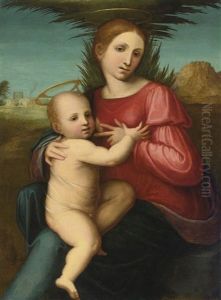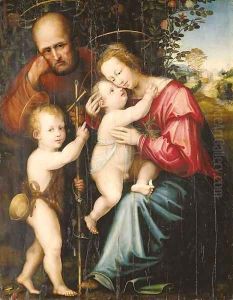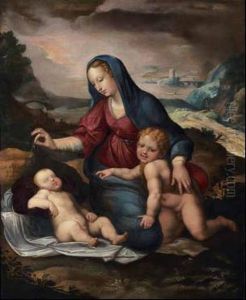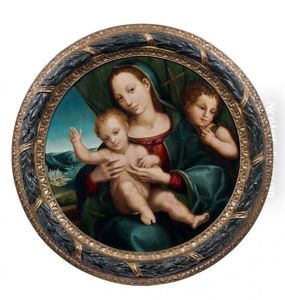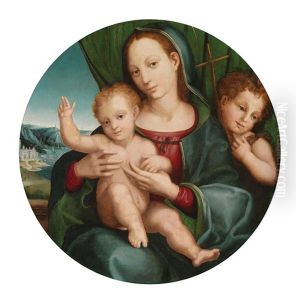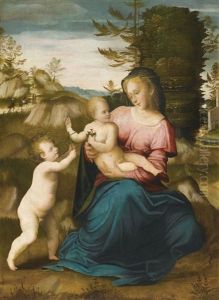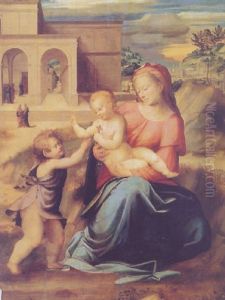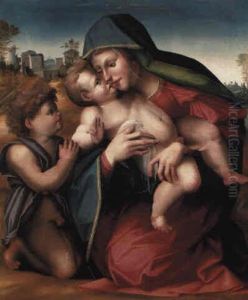Giovanni Di Lorenzo Larciani Paintings
Giovanni di Lorenzo Larciani, also known as Giovanni Larciani or Giovanni di Lorenzo, was an Italian painter of the Renaissance period, active primarily in Florence. His exact date of birth is uncertain, but it is believed to be around 1484. Larciani was a contemporary of other notable artists such as Raphael and Michelangelo, though his work did not achieve the same level of fame.
Larciani's artistic training and early influences are not thoroughly documented, but it is known that he was a pupil of the Florentine painter, Ridolfo Ghirlandaio, who was a prominent artist in his own right and a key figure in the city's artistic community. Under Ghirlandaio's tutelage, Larciani would have been exposed to the principles of High Renaissance art, including harmony, balance, and a focus on the human figure.
Throughout his career, Larciani produced a number of religious works, which was typical for the time. His paintings often featured biblical scenes and were characterized by their vivid colors and detailed landscapes, reflecting the influence of his master and the Florentine tradition. Larciani's works were appreciated for their narrative quality and his ability to convey complex scenes with clarity.
Despite his skills, Larciani did not rise to the same level of prominence as some of his contemporaries. However, he was respected within the Florentine art community and received commissions from various local institutions, including churches and confraternities. His works can be found in several churches in Florence and in the surrounding region, proving that his art was in demand during his lifetime.
The details surrounding Giovanni di Lorenzo Larciani's later life and death are also somewhat obscure, but it is generally accepted that he died around 1527. The exact cause and circumstances of his death are not well recorded. It is through his remaining works that we can appreciate his contribution to the Renaissance movement, as they provide insight into the artistic environment of Florence during this vibrant period in art history.
